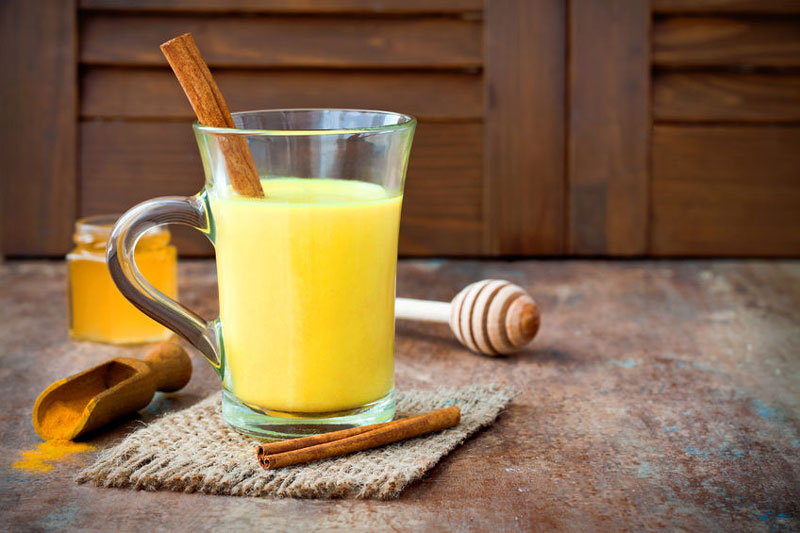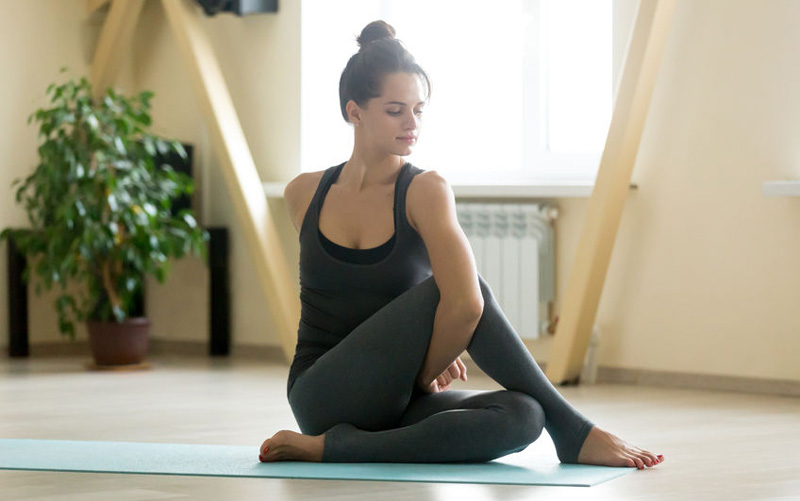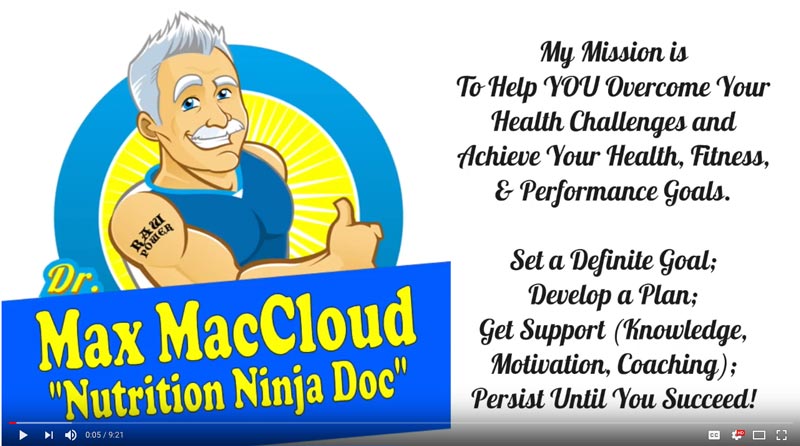March 2018 NewsBlast | Article 4
22 Mar 2018 / joeNAFC NewsBlast - March 2018| Ed 4
The Benefits and Mystery of Protein - Part 1
Written by: Dr. Max MacCloud, DO, ND, PhD, The Health, Fitness & Nutrition Ninja
Source: My Body Symphony
The Benefits and Mystery of Protein - Part 1
Protein is a somewhat mysterious substance with numerous health benefits. This brief video is an introduction to the many benefits of protein. People tend to associate protein primarily with building muscle and athletic performance, but there’s a whole lot more to it. Learn why it’s important to incorporate some high-quality protein foods into your daily diet.
This video is the first installment, with several more to come. Understanding protein will provide lifelong benefits to your health, performance & appearance.
To watch the video on The Benefits and Mystery of Protein Part - 1: Video Link
Learn more about this vital nutrient by getting your free copy of The Real Protein Report at: MyBoydSymphony.com Written by: Dr. Max MacCloud, DO, ND, PhD, The Health, Fitness & Nutrition Ninja
March 2018 NewsBlast | Article 2
20 Mar 2018 / joeNAFC NewsBlast - March 2018 | Ed 2
Inflammation Fighting Tumeric Tonic
Written by: Tammy LeBoss - FitPro Foodie
Source: NAFC Nutrition Coach & CEC Boost - NAFC Trainer

Copyright: Svetazarzamora / 123RF Stock Photo
"Let Food Be Thy Medicine, and medicine be thy food.” – Hippocrates
Did you know that when it comes to managing stress levels, maintaining a healthy digestive tract is a major factor often over-looked? Inflammation has been linked to gut stress and has been called a hidden epidemic affecting millions of Americans. While new studies show that inflammation can take place in any part of the body, including the brain, inflammation can also take place in our digestive tracts. These studies confirm that amongst its connection to many diseases, inflammation is also linked to weight gain. If your clients are over-exerting, not getting adequate recovery time and sleep, and stressed out, it’s likely they’re dealing with inflammation and thus, minimizing the results they want.
Boost recovery time! Tumeric has been used for thousands of years in Asia and India as a delicious spice, and as a medicinal herb in Chinese medicine. It’s what gives curry dishes its deep, bright yellow color. This earthy, peppery-flavored spice may also hold the potential for fighting inflammation. It contains curcumin which is the active, beneficial ingredient that when combined with black pepper, enhances its absorption and efficacy. Recently studies have also shown its blood sugar-lowering effects, thus reducing the amount of insulin released after meals. For some, snacking less, eating fewer carbs, and adding turmeric into their diets, may also aid in fat loss.
Use turmeric to create a delicious golden milk tonic, add a little black pepper and make a potentially powerful inflammation-fighting tonic. Here’s what you’ll need:
Ingredients
- 2 cups coconut water or 2 cups almond milk
- 2 TBSP grated turmeric powder, or 1/2 tsp. dried turmeric powder
- 1 TBSP grated ginger, fresh or 1 tsp. dried
- 1 lemon or 1/2 orange
- 1 small carrot
- 1 TBSP raw honey
- Pinch of black pepper
Blend ingredients in a blender. Drink as is or strain for desired consistency. Take a shot of this before yoga or as a post-workout recovery cocktail.
How can trainers deal with inflamed clients?
Trainers need to understand the appropriate exercise recommendations for clients who are working with inflammation. Recognize that clients who are dealing with arthritis, joint inflammation, and other forms of consistent stressors, will need to receive special ‘TLC’ in their training program. With a better understanding of the health issues and manageable exercise options associated with arthritis, for example, trainers can be better equipped to improve the health, functional capacity, and quality of life of afflicted clients. For the client who is prone to stress, inflammation or adrenal fatigue, NAFC suggests giving careful attention to the following:
- Avoid excessive over-training.
- Include relaxation or meditation strategies to the exercise program.
- Add recovery cardio or brisk walks to their routine.
- Consistent foam-rolling or myofascial release techniques. Commit to getting adequate sleep.
The key to getting control of inflammation starts with a solid understanding of nutrition. Foods that are heavily processed, high in trans fats, or high in sugars contribute to inflammation. In addition to inflammation, these foods also contribute to a higher risk of obesity and weight-loss resistance. Understanding the importance of nutrition and building a healthy gut is key to managing inflammation and getting your clients' quicker and better results. Learn more about NAFC Nutrition & Wellness Coach today.
Written by: Tammy LeBoss - FitPro Foodie
March 2018 NewsBlast | Article 1
15 Mar 2018 / joeNAFC NewsBlast - March 2018 | Ed 1
Hips & Twists - How to Safely Twist, Part 2
Written by: Tammy LeBoss - FitPro Foodie

Copyright: Aleksandr Davydov / 123RF Stock Photo
How to Twist
Indian practitioners of yoga typically squatted and sat cross-legged in daily life, and yoga poses were an outgrowth of these postures. Now modern-day yoga practitioners sit in chairs all day and rush into studios a couple of times a week. They strain to twist themselves into more difficult postures despite their lack of flexibility and other physical challenges.
Twists can help slumped-back postures and provide an abundance of benefits. Twisting poses can help restore our spine’s natural range-of-motion, cleanse our organs, aid digestion and stimulate circulation. Twists also provide structural benefits to the musculoskeletal system, and improves focus and awareness.
But, before plunging your students into deep twists, keep in mind these key anatomical points in a basic Seated Twist:
Elongate the spine; a slumped-over posture significantly limits spinal rotation. Ground your sitting bones and draw the spine straight up the crown of the head.
Make sure that your spine is perpendicular to the seat, avoid listing to the side, front nor back.
Remember that each section of the spine has a different rotational mobility. The cervical (neck) vertebrae, for example, are the most mobile in twisting.
Because the 12 thoracic (mid-back) vertebrae have ribs attached, they can’t twist as freely as the neck vertebrae.
And because of the orientation of the lumbar (lower spine) facet joints, the rotation of these five vertebrae is the most limited.
Pro-Tip
To ensure that you don’t over twist in the more mobile parts of your spine, begin your seated twist by bringing your awareness into your lower back and beginning the twist from there. Allow the twist to gradually unfold and never force a twist to occur.
Twists should be entered and exited methodically with care and caution. Very flexible participants may tend to “throw” themselves into deep twists, exposing them to greater risk of injury. On the contrary, stiffer participants may try to force themselves into a deep twist that they are not yet ready for. All twists tend to collapse the ribcage to some degree. This is because the thoracic spine has a limited capacity to rotate, being bound by the ribs. Use the accessory muscles of respiration to counteract the tendency. Begin by drawing the shoulder blades toward the midline and stabilizing them there. Then expand the chest by engaging the pectoralis minor and serratus anterior muscles.
Pro-Tip
For optimal safety, all twists should be accessed from a neutrally rotated posture. Prepare for deep twists with a neutralizing pose such as a Sphinx pose, and Standing and Seated Forward Folds where the spine is in a symmetrical shape.
Here are a few more key points to remember when transitioning into twisting:
- Square the hips which should not revolve with the torso and upper body (NAFC ANSER™)
- Avoid leading with the head
- Keep the cervical and thoracic spine in line
- Never hold your breath while twisting
- Keep eyes in line with the direction of twist
Challenge Your Balance with a Standing Twist
Once the basics of alignment are realized, challenge your balance slowly with control with Revolved Half Moon pose. Apply the following:
- Engage a solid grounding leg that is the same in Mountain pose
- Keep the grounding leg straight yet unlocked
- Direct the tailbone toward the lifted heel
- Lift the sternum and draw the front ribs inward
Learn to fully reap the physiological and structural benefits of twists, and you might also gain its centering benefits. Learn more about how the layers of muscle and bone revolve on a deeper level, and gain the ability to stay centered as the world jiggles around you. Learn more about how to safely and effectively enter and exit deep twists such as Revolved Triangle, Crescent Lunge, Chair, Crow poses and more. Always apply safe sequencing and be prepared to offer modifications as every ‘body’ is different.
Written by: Tammy LeBoss - FitPro Foodie
begin ... prev 1 2 3 4 5 6 7 8 9 10 11 12


